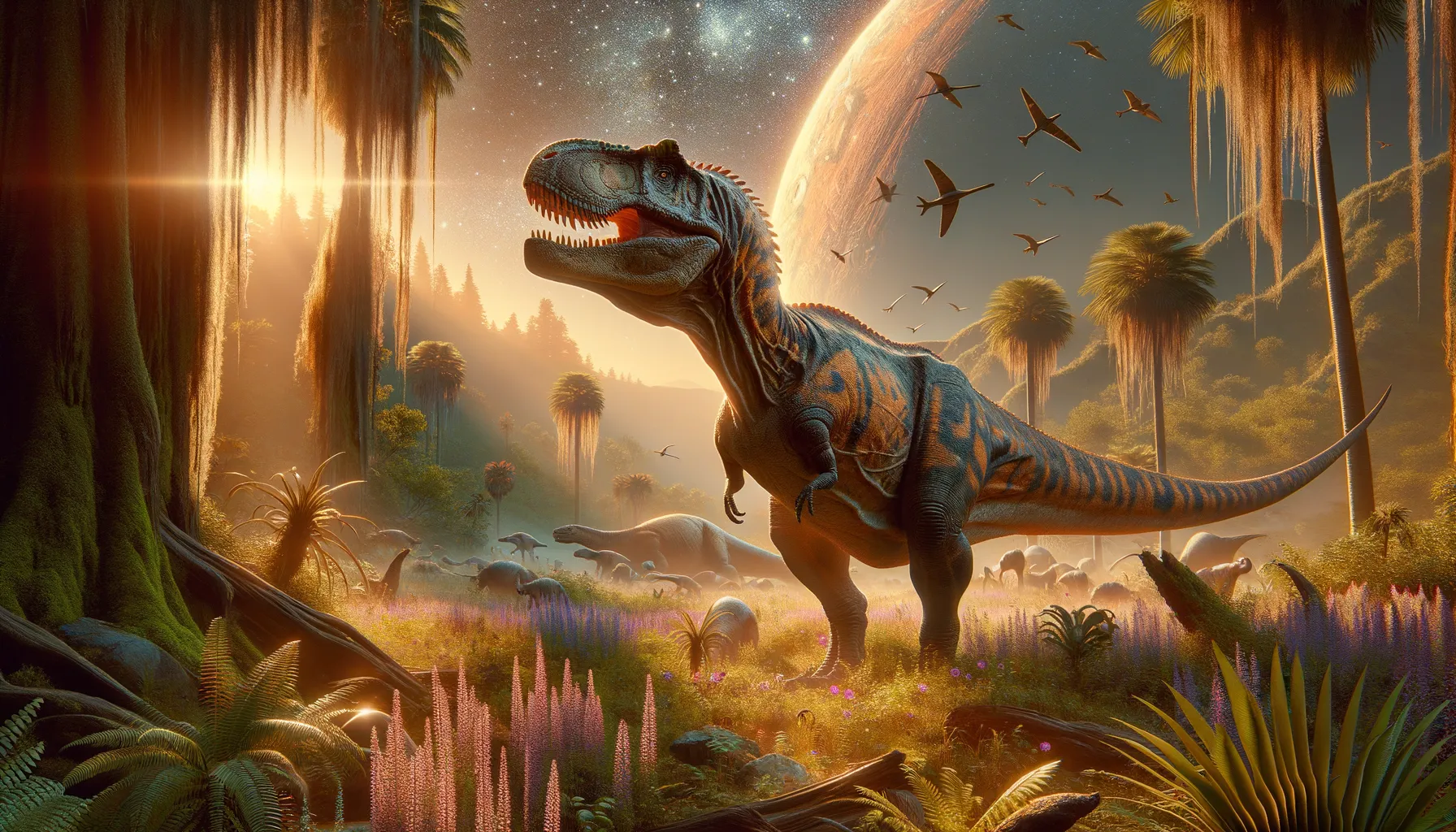
Andhrasaurus
A mighty hunter from ancient India.
Period
Cretaceous
Length
Roughly 8 to 10 meters long.
Height
Around 3 to 4 meters tall.
Weight
Approximately 1.5 to 2 tons.
Andhrasaurus, a dinosaur that thrived in the late Cretaceous period, was discovered in the Indian subcontinent. This theropod had a robust build suitable for both hunting and scavenging. It adapted well to the diverse climates of its time, which might have been key to its survival. Its fossils provide insights into the flora and fauna of ancient India, serving as critical links in understanding prehistoric biodiversity.
Diet
Andhrasaurus likely had an omnivorous diet. It fed on smaller animals and plants available in its habitat. This adaptability might have played a part in its survival across varying environmental conditions.
Hunting
Its hunting style probably involved ambushing smaller prey with quick bursts of speed. It relied on agility and sharp senses to catch animals. When prey was scarce, it might have scavenged for food.
Environmental challenges
Andhrasaurus faced challenges such as fluctuating climate changes during its era. These changes would have affected the availability of food sources. Additionally, it competed with other predators for resources. Adaptation was crucial for surviving in the dynamic ecosystem.
Speed
Moderate speed, likely faster than many contemporaries.
Lifespan
Estimated to live several decades.
First discovery
Unearthed in Andhra Pradesh, India, 2012.
Fun Facts
- Andhrasaurus was a herbivorous dinosaur that lived during the late Cretaceous period.
- This dinosaur was discovered in the Andhra Pradesh region of India, which is how it got its name.
- Andhrasaurus was a relatively small dinosaur, estimated to be about 15 feet long.
- It belonged to the group of dinosaurs known as Titanosaurs, which were known for their long necks and tails.
- The fossils of Andhrasaurus were discovered in the Godavari Valley, which is rich in dinosaur fossils.
- Unlike many other dinosaurs, Andhrasaurus is not well known due to the limited fossil evidence available.
- Researchers believe that Andhrasaurus lived in a semi-arid environment, based on the geological evidence found with its fossils.
Growth and Development
Andhrasaurus likely grew rapidly during its juvenile stages to defend against predators. Its development involved shedding and replacing teeth, which was important for a successful hunting career. Reaching adulthood brought size advantages, aiding both in hunting and defense.
Habitat
This dinosaur lived in a region that was rich in forests and river systems. Such environments provided abundant resources like water, plants, and prey. Its habitats possibly shifted over time due to changes in the Earth's climate. These areas were likely to support diverse wildlife.
Interaction with other species
Andhrasaurus interacted with a variety of species, both as prey and predator. It might have coexisted with larger herbivores without conflict unless food became scarce. Social behaviors could have included hunting cooperation with others of its kind. Competition with other carnivores for food was likely.
Natural lifespan
Andhrasaurus had a natural lifespan extending to several decades, assuming it avoided fatal encounters with predators and disease.
Reproduction
Andhrasaurus likely laid eggs, as observed in many theropods. Young ones might have been cared for by one or both parents until capable of self-defense. Nesting in secure areas helped protect the eggs from predators. Clutch size could range from a few to a dozen eggs.
Social behaviour
Andhrasaurus may have traveled in small groups or packs, especially when hunting. Social interactions could include coordinating hunts or defending territory. Displays of dominance might occur during mating seasons. It possibly communicated through vocalizations and visual signals.
Fossil locations
Fossils of Andhrasaurus have been primarily found in Andhra Pradesh, India. Excavations have provided valuable skeletal remains. These findings contribute significantly to our understanding of dinosaur life in the Indian subcontinent. The area remains an important site for ongoing paleontological research.
